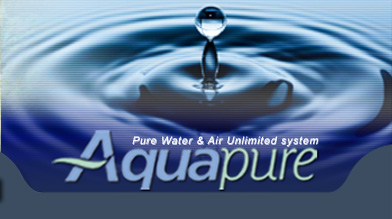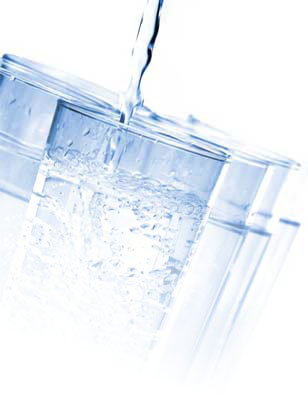 |
 |
|
|||||||||||||||||||
|
|
|
||||||||||||||||||||
|
|
|
|
|
|
|
|
|
|
|
|
|||||||||||
|
|
|
|
|
|
|
||||||||||||||||
|
|
|
|
 |
|
|||||||||||||||||
|
|
|
|
|
||||||||||||||||||
|
|
|
|
|
||||||||||||||||||
Frequently Asked Questions: Typical questions that customers frequently ask: Answers: Please click each of the questions |
|
||||||||||||||||||||
|
|
|
|
|
||||||||||||||||||
|
|
|
|
|
||||||||||||||||||
|
|
|
|
|
||||||||||||||||||
|
|
|
|
|
||||||||||||||||||
|
|
|
|
|
||||||||||||||||||
|
|
|
|
|
||||||||||||||||||
|
|
|
|
|
||||||||||||||||||
|
|
|
|
|
||||||||||||||||||
|
|
 |
|
|
||||||||||||||||||
|
|
|||||||||||||||||||||
1. What about the minerals that Reverse Osmosis removes from water, doesn’t the body need these? |
|
||||||||||||||||||||
|
|
|||||||||||||||||||||
2. Why choose Aquapure System? We are also driven to serve our customers and provide technical support on our products to ensure continued product reliability, functionality, and customer satisfaction. We are also commited to continue to develop relationships and strategic alliances with manufacturers and suppliers of other high-tech health and environmental products worldwide; in order to bring new, improved, innovative products to consumers as soon as they become available. |
|
||||||||||||||||||||
 |
|
||||||||||||||||||||
|
|
|||||||||||||||||||||
3. Why do I need Water Purifier Systems? Our tap water is treated to only the minimum of standards: by filtration, chemical conditioning, and disinfections with chlorine. The toxic metals, pesticides, industrial chemicals, residual chemicals from the water treatment itself, and the carcinogenic trihalomethanes from the chlorine by-products itself (known to cause liver and corectal cancers - Dr. Michael Colgan, Optimum Sports Nutrition) are all present in the water we drink. According to the scientists from the World Health Organization (WHO) and the National Cancer Institute (NCI), it has been estimated that between 60-80 percent of all cancer is caused by the chemicals in the air we breathe, the food we eat, and in the water we drink. Cancer will afflict one out of every four people. The NCI expressed concern over 20 years ago, that increases in carcinogens in our water, and our inability to remove them at the treatment plants would result in serious exposure of the general population. Bacteria, viruses, synthetic compounds, metals, pesticides, herbicides, radio nuclides, and more are the contaminants that are present in our drinking water, and have the potential to cause health effects ranging from low grade sub clinical illnesses such as colds and flu to death from cancer (Canadian Nutrition Guide). There are more than 60,000 chemical contaminants in water. Any municipal water supply is likely to have at least 1,000 of these. Water authorities do what they can, but the expense of ensuring our tap water is healthy enough for us to drink is too astronomical at such a large scale. It then becomes imperative for the individual to purify their own drinking water: either by purchasing a purification unit, or purchasing purified water. The two means of purification available today is by distillation or reverse osmosis (desalination). |
|
||||||||||||||||||||
|
|
|||||||||||||||||||||
4. What is the difference between purification and filtration? Filtration is primarily designed to filter out only one or two specific contaminants: iron filters to remove iron, carbon filters to remove chlorine, sediment filters to remove solids, etc. Many of your portable types of systems available from your drugstore, hardware, or dept. store are in fact only filters. The easiest way to determine whether it is a purification system or a filtration system is by determining how long it takes to collect the drinking water. If it requires only seconds or minutes, then this is a filtration system. If it requires many hours, then it is a purification system. |
|
||||||||||||||||||||
|
|
|||||||||||||||||||||
5. Is the water from home purification systems the same as bottled water? In a home purification system, although the near pure water collects in a holding tank, the chlorine is still present within the holding tank. Once you draw the water from the holding tank, then and only then is the chlorine removed. Although any bacteria or microorganisms should have been removed from the water prior to collecting in the holding tank, the presence of the chlorine is an added protection. For people who are on un-chlorinated water supplies, the very fact that the home purification system is a closed system is the most important factor to consider. |
|
||||||||||||||||||||
|
|
|||||||||||||||||||||
6. Will the bacteria stay in a home purification system and grow? However, in a filtration system, the bacteria do remain on the exterior of the filter and can breed and multiply. Filtration is effective in removing specific problem contaminants such as iron, chlorine, sediments, sulfur, etc. but should not be used exclusively to produce pure drinking water. Only a distiller or a reverse osmosis system can produce pure drinking water that is free of bacteria, viruses, and any microorganisms. |
|
||||||||||||||||||||
|
|
|||||||||||||||||||||
7. Doesn't Reverse Osmosis waste a lot of water? In comparison: 1) a person wastes 20 gallons of water a day based on 5 toilet flushes, 2) a person wastes 90 gallons of water taking a single 15 minute shower. A 4-gallon water consumption is therefore quite nominal in order to drink pure water. |
|
||||||||||||||||||||
|
|
|||||||||||||||||||||
8. What is KDF? Other contaminants such as aluminum, arsenic, iron, mercury, lead, and other heavy metals, bond to the KDF media. KDF process media also controls microorganisms in 2 ways. The first way is a by-product of redox: the exchange of electrons creates an electrolytic field that most organisms cannot survive. The second, the forming of hydroxyl radicals and peroxides (from the water molecules), interferes with the microorganism's ability to function. |
|
||||||||||||||||||||
|
|
|||||||||||||||||||||
9. Why would I want to remove the chlorine? Chlorine is a toxic gas and should not be a part of your shower, or your drinking water! Externally, chlorine chemically attacks and bonds with proteins in the human body, causing eye irritation/redness, dry and brittle hair, itching and flaking skin, and a variety of other ailments. Chlorine ingested internally has been charged by researchers to be the "greatest crippler and killer of modern times" and "the cause of an unprecedented disease epidemic, which includes cancer, heart attacks, strokes, senility, premature aging, and sexual impotency. The body absorbs chlorine from showering through the largest organ of your body-your skin! It absorbs chlorine from the water directly through your pores. Chlorine also vaporizes out of the water into the air. You not only absorb the chlorine through your skin, but you also inhale large amounts into your lungs where it is directly transferred into the blood stream. The longer and hotter the shower, the more toxic chemicals build up in the air. The American Chemical Society estimates that "Householders could receive from 6 to 100 times more of the chemicals by breathing the air around the showers, baths, etc..., that they would by drinking the water". |
|
||||||||||||||||||||
 |
 |
|
|||||||||||||||||||
 |
|
|
|
|
|
|
 |
|
|||||||||||||
 |
|
||||||||||||||||||||
|
|
|
|
|
|
|
|
|
|
|
|
|
|
|
|
|
|
|
|
|
|
|